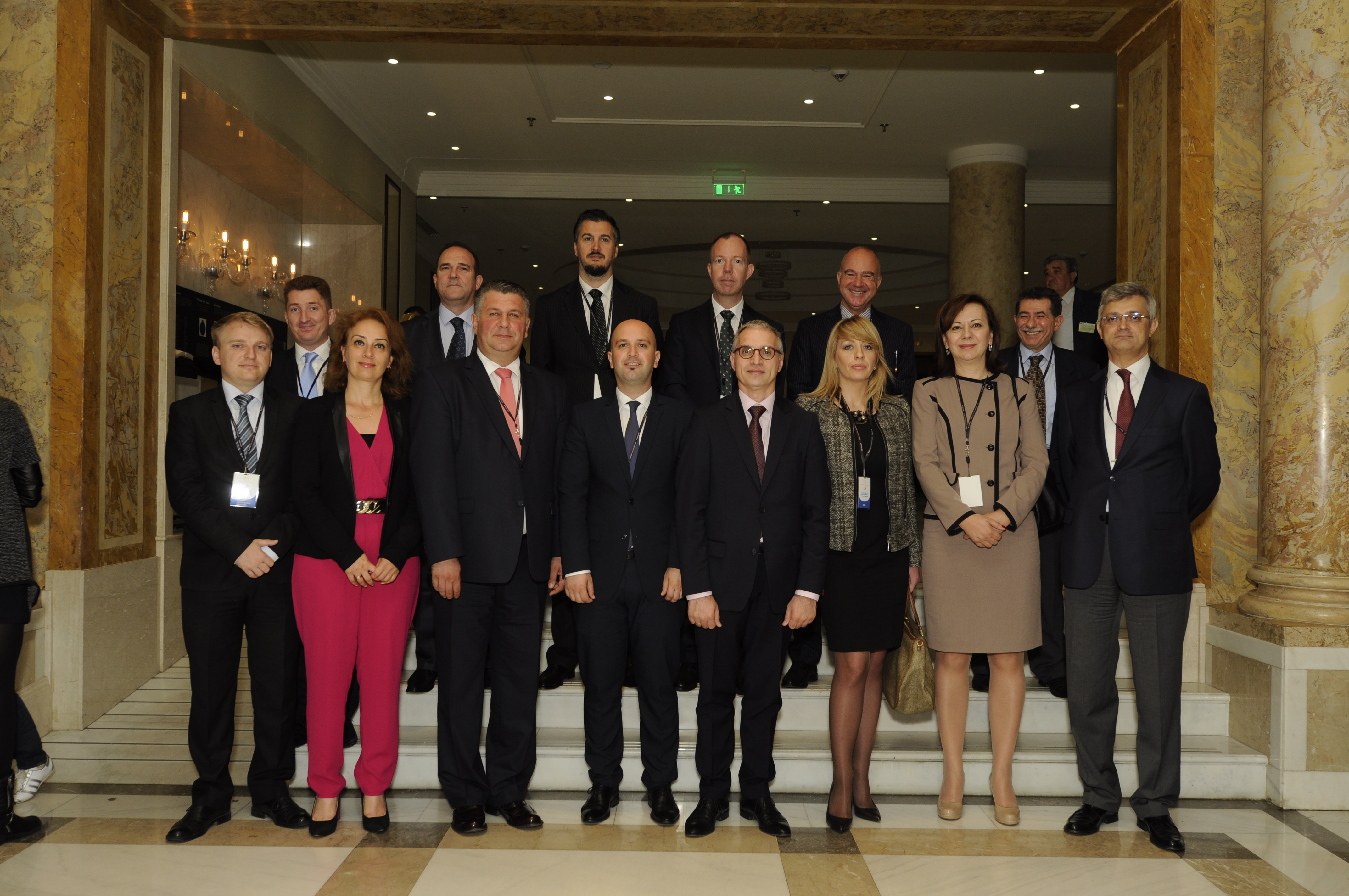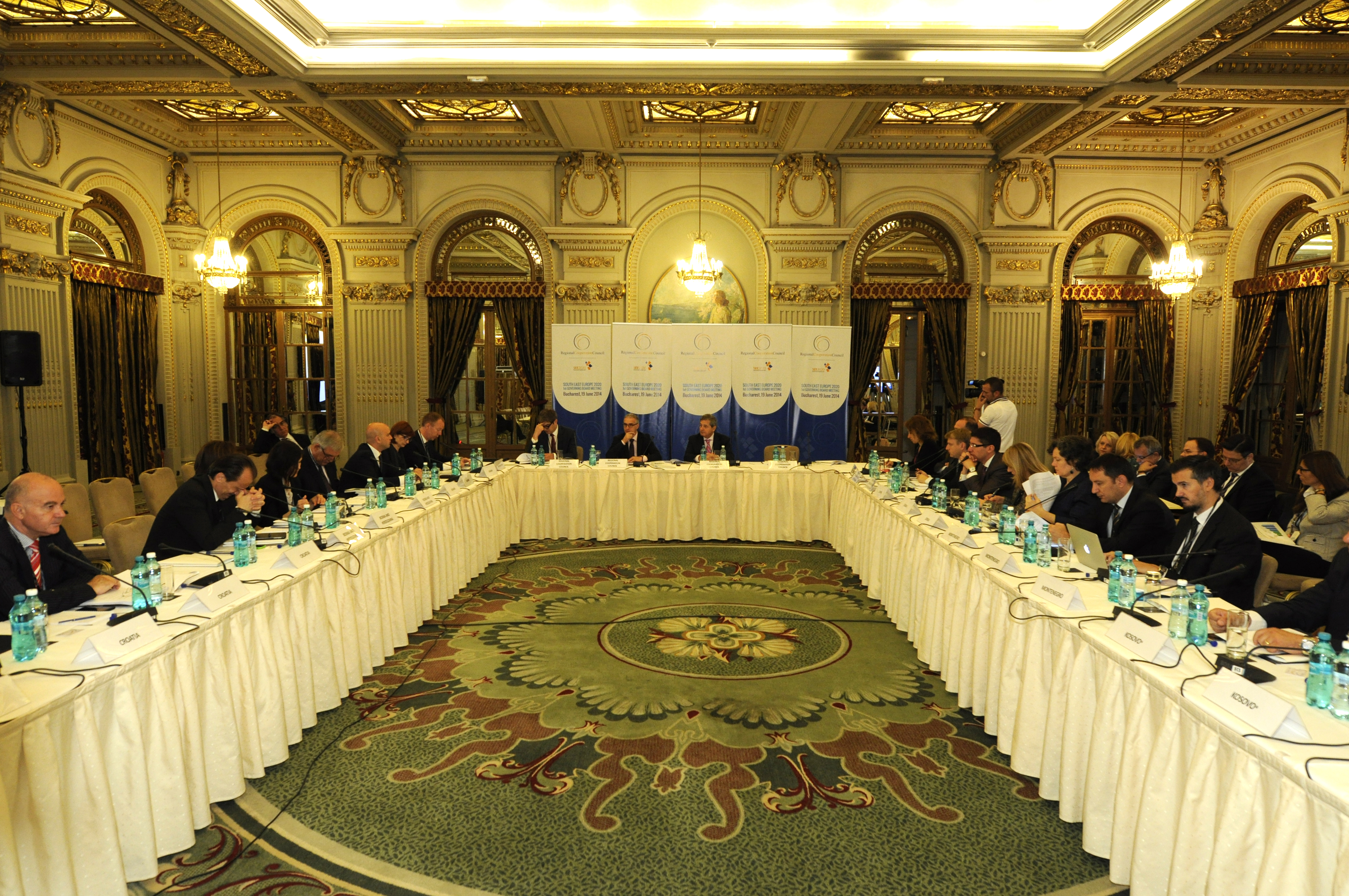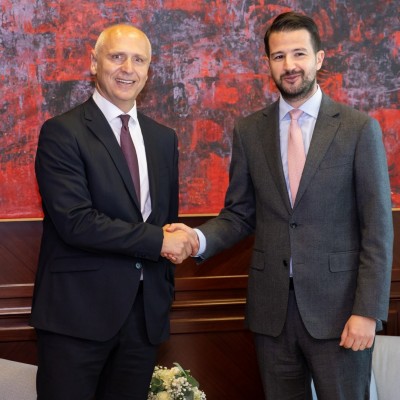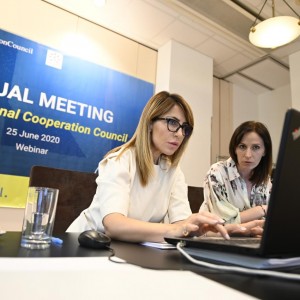Governing Board of the Regional Cooperation Council’s South East Europe 2020 Strategy meets in Bucharest
19 June 2014

Participants of the first meeting of the RCC South East Europe 2020 Strategy's Governing Board, held on 19 June 2014 in bucharest, Romania. (Photo: RCC/Dejan Miholjcic)

The first meeting of the RCC South East Europe 2020 Strategy's Governing Board takes place in Bucharest, Romania, on 19 June 2014. (Photo: RCC/Dejan Miholjcic)
BUCHAREST, 19 June 2014 – The first ever meeting of the Regional Cooperation Council (RCC) South East Europe (SEE) 2020 Strategy's Governing Board took place in Bucharest today. With low growth and unemployment as the greatest problems of the region, the SEE 2020 Strategy was developed by the RCC to assist the governments in focusing on the economy, job creation and good economic governance.
RCC Secretary General, Goran Svilanovic, emphasised the feasibility of the process, calling it a “reasonable balance
between ambition and realism”. Speaking for the European Commission, Kjartan Bjornsson (Deputy Head of Regional Programmes Unit of DG Enlargement) described the SEE 2020 Strategy as - “the right approach at the right time and the right place”. Both Svilanovic and Bjornsson highlighted that the region’s citizens “deserve a better life” and that there is a lot of catching up to do en route to EU accession. Along that road, implementation will be the key to the success of the Strategy.
The Strategy Governing Board heard also the SEE 2020 Baseline Report: “Towards Regional Growth”, as well as an
explanation about the SEE 2020 Scoreboard. Presenting the Scoreboard - a set of indicators for monitoring the progress of the Strategy - Sanjin Arifagic, the RCC SEE 2020 Strategy Coordinator, said the monitoring mechanism will enable
all stakeholders - governments but also the region’s citizens - to have a “full and clear insight into the ways that the strategy is impacting the region”.
The Governing Board has also noted the progress so far and issued policy guidance on the implementation of this, RCC’s key activity.
South East Europe 2020 Strategy is a joint strategy for economic development of 7 economies in SEE – Albania, Bosnia
and Herzegovina, Croatia, Kosovo*, Montenegro, Serbia and The Former Yugoslav Republic of Macedonia. The Strategy was initiated and agreed by the governments of these economies during 2014 with RCC’s support.
By implementing 86 strategic measures, the countries plan to remove trade barriers, jointly promote the region to
foreign investors, fund shared research programmes, develop common energy and transport infrastructures, enable mobility of workers across the Balkans and improve government services and environment for doing business. Growth unlocked by these measures could create a million jobs by 2020 and bring the entire region closer to EU accession. Activities both at the national and regional level are being implemented and a number of instruments are being put forward to help the governments deliver. One such instrument that will be available for the implementation of SEE 2020 is IPA II – the EU’s instrument for Pre-Accession Assistance – which provides for EUR 11.7 billion over the next 7 years.
The specific goals the SEE 2020 Strategy hopes to achieve are:
- Increase regional GDP PPP (Gross Domestic Product Purchasing Power Parity) per capita from 38% to 46% of theEU-27 average
- Grow the region’s total value of trade in goods and services by more than 130%
- Reduce the region’s trade deficit from 14.1 to 11.6 per cent of regional GDP
- Increase GDP per person employed by32%
- Add 300,000 highly qualified people to the region’s’ workforce
- Improve governments’ effectiveness as measured by the World Bank Governance Index from 2.33 to 2.9 by 2020
- Increase net enterprise creation(new businesses per year) from 30,107 to 33,760
- Increase exports of goods &services per capita from the region from EUR 1,780 to EUR 4,250
- Increase in the overall employment rate, as a percentage of the 15+ population, from 39.5% to 44.4%
- Increase SEE intra-regional trade in goods by more than 140%
- Increase overall annual Foreign Direct Investment (FDI) inflows to the region by at least 160%
Baseline Report: http://rcc.int/pages/76/see-2020-baseline-report-towards-regional-growth
SEE 2020 Scoreboard: http://rcc.int/see2020_charts




